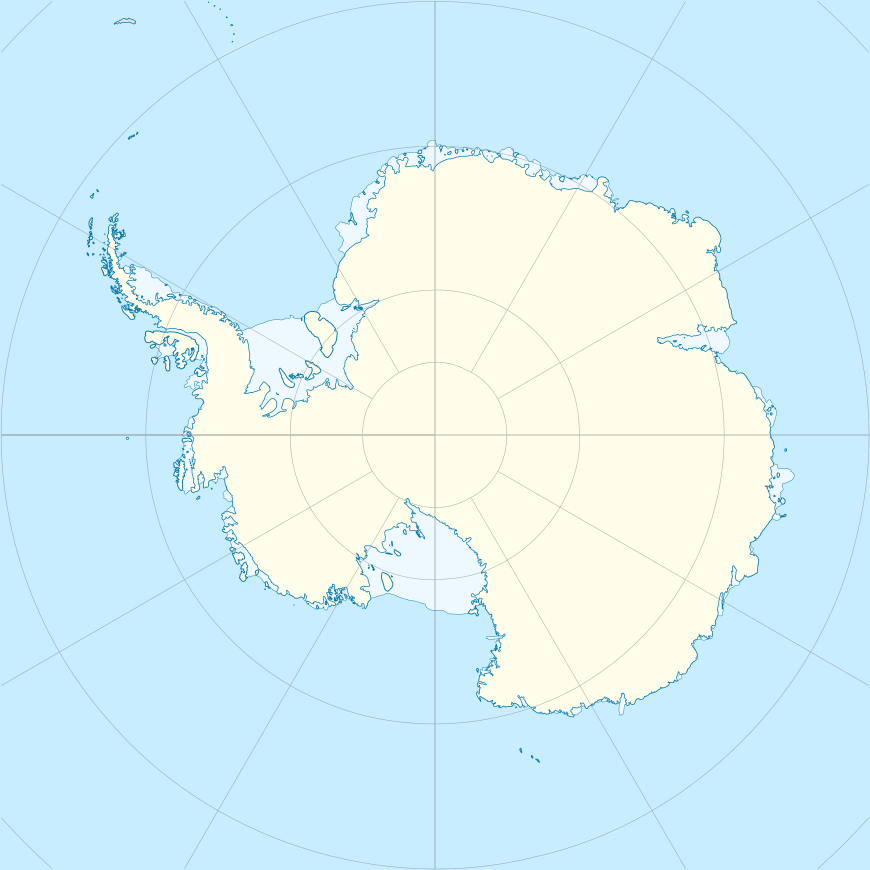Princess Elisabeth Antarctica
| Princess Elisabeth Station Prinses Elisabethbasis Station Princesse-Élisabeth Prinzessin-Elisabeth-Station | |
|---|---|
| Antarctic Station | |
|
Test build and public presentation, September 2007, Brussels | |
 Princess Elisabeth Station Location of Princess Elisabeth Station in Antarctica | |
| Coordinates: 71°57′00″S 23°20′49″E / 71.949944°S 23.347079°ECoordinates: 71°57′00″S 23°20′49″E / 71.949944°S 23.347079°E | |
| Country |
|
| Location in Antarctica |
Utsteinen Nunatak Queen Maud Land Antarctica |
| Administered by | International Polar Foundation |
| Established | 15 February 2009 |
| Closed | 25 February 2015 |
| Elevation | 1,382 m (4,534 ft) |
| Population | |
| • Total |
|
| Type | Seasonal |
| Period | Summer |
| Status | Temporally closed for ownership dispute |
| Princess Elisabeth Skiway | |||||||||||
|---|---|---|---|---|---|---|---|---|---|---|---|
| Summary | |||||||||||
| Airport type | Private | ||||||||||
| Location |
Utsteinen Nunatak Queen Maud Land | ||||||||||
| Coordinates | 71°57′27″S 23°13′12″E / 71.957375°S 23.220126°E | ||||||||||
| Website |
antarcticstation | ||||||||||
| Map | |||||||||||
 Princess Elisabeth Skiway Location of airfield in Antarctica | |||||||||||
| Runways | |||||||||||
| |||||||||||
Princess Elisabeth Antarctica, located on Utsteinen Nunatak in Queen Maud Land (71°57′00″S 23°20′49″E / 71.949944°S 23.347079°E), is a Belgian scientific polar research station, which went into service on February 15, 2009.
History
The station, designed, built and operated by the International Polar Foundation, is the first polar base that combines eco-friendly construction materials, clean and efficient energy use, optimization of the station's energy consumption and clever waste-management techniques.
Testing phase in Brussels and building construction in Antarctica was coordinated by Belgian main contractor BESIX.[1]
The station is built against a ridge (The Utsteinen ridge) that is exposed to gales of up to 300 kilometres per hour (190 mph). The station can withstand such strong winds through its aerodynamic shape and its foundation anchoring of several metres deep into the permafrost. Philippe Samyn, a Belgian architect, was involved in designing the shell and underlying structure. The upper deck of the building is the actual station and looks over the ridge edge. The lower deck contains a garage for snowcat vehicles and other utilities.
The Princess Elisabeth base is the only zero-emission base on the Antarctic, and runs entirely on solar and wind energy through the use of a micro smart grid. The station is connected to nine wind turbines that stretch out along the Utsteinen ridge. It houses up to 16 scientists at a time.
The station is named after Princess Elisabeth, Duchess of Brabant, the eldest daughter of King Philippe of Belgium.
Ownership dispute
There was a protracted dispute between the government of Belgium and Alain Hubert as to which party controls the base.[2] The Belgian Government has alleged financial mismanagement by the base's private operators, the International Polar Foundation.[2] Disputes over ownership and control of the base have led to a reduction in scientific research being undertaken at the base.[2] As per L'Echo, the head of the Belgian Federal Science Policy Office, René Delcourt, has stated that no Belgian scientists would be sent to the station in 2017.[3]
The dispute was resolved on 9 June 2017 as a judgement ruled by the Belgian Council of State. Publicly announced on June 30, 2017 as the "Pax Antarctica", the settlement between the International Polar Foundation and the Belgian government includes the Belgian government fully owning the base, the International Polar Foundation receiving contracts to operate the base for the next six years, and a cessation of all legal proceedings. [4] Research work resumed in November 2017, with 24 scientists from 12 different countries expected at the base. [5]
See also
References
- ↑ "Project: Princess Elisabeth Antarctica Polar Station". Retrieved 2 September 2017.
- 1 2 3 Enserink, Martin (January 17, 2017). "Science suffers in cold war over polar base". Science. Archived from the original on January 18, 2017.
- ↑ Vincent, Christopher (December 9, 2016). "Princess Elisabeth polar station – Canadian scientist expected in January, uncertainty about Belgians". The Brussels Times. Retrieved January 20, 2017.
The announcement coincided with a report in l’Echo daily in Belgium that there “will be no [Belgian] State mission to Antartica this year” [...] The daily reported that the head of Belgium’s Federal Science Policy Office, René Delcourt, had informed the International Polar Foundation in a letter dated the 1st of December that Belgium would not send any scientists to the polar station this year.
- ↑ "PAX ANTARCTICA". International Polar Foundation. June 30, 2017. Retrieved 24 February 2018.
- ↑ Apelblat, M. (26 Nov 2017). "Belgian polar station in Antarctica starts to work again". Brussels Times. Retrieved 24 February 2018.
External links
| Wikimedia Commons has media related to Princess Elisabeth Station. |
- Belgian Antarctic Research Station - Princess Elisabeth Station
- International Polar Foundation
- Belgian Polar Platform
- The Princess Elisabeth Polar Station: a case study on Constructalia
- Zero-Emissions Station A slideshow about the Princess Elisabeth Station, Allianz Knowledge, July 2008
- COMNAP Antarctic Facilities
- COMNAP Antarctic Facilities Map
- The Pricess Elisabeth Station at Philippe Samyn and Partners
.svg.png)